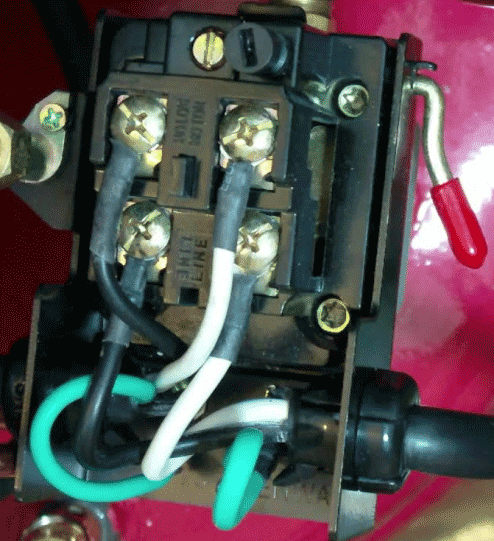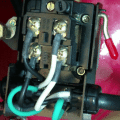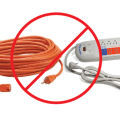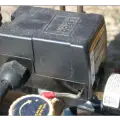Hey! This site is reader-supported and we earn commissions if you purchase products from retailers after clicking on a link from our site.
Air compressor pressure switches are often liable to premature wear and therefore need to be replaced. When replacing your air compressor pressure switch, knowing how to wire it correctly is crucial! Often seen as a daunting task, to begin with, this article will provide you with all the relevant information to make this process simple for you!
Visit our Air Compressor Pressure Switch Troubleshooting & Buying Guide for more information about air compressor pressure switches!
Table of Contents
- Equipment Needed to Wire a 220V Air Compressor Pressure Switch
- Wiring an Air Compressor Pressure Switch Safety Tips
- How to Wire a 220V Air Compressor Pressure Switch
- Wiring 220 Air Compressor YouTube Demonstrations
- Testing the Air Compressor Pressure Switch Performance
- FAQs (Frequently Asked Questions)
Equipment Needed to Wire a 220V Air Compressor Pressure Switch
Before you can begin to wire your 220v air compressor pressure switch, you need to ensure you have all the correct equipment you need for the job. The necessary equipment to wire a 220V air compressor pressure switch includes:
- Screwdriver
- Wire strippers
- Solderless ring terminals
- Pressure switch
- Safety gloves

Wiring an Air Compressor Pressure Switch Safety Tips
When working with any tools and certainly any piece of electrical equipment, it’s very important to stay safe. Here are a number of tips that will help you to safeguard yourself:
- Constantly check the efficiency of your air compressor pressure switch to determine beforehand if repairs are necessary.
- Consider wearing protective clothing such as gloves before you start the wiring process.
- Ensure that your hands and the surface around you are dry and free of water to avoid potential electrocution.
- Make sure the wires you intend to connect have proper insulation.
- Before connecting terminals and cords, double-check the terminal labels and wire colors to ensure you connect the correct ones.
- The main source of power should be shut off before anything is done.
- If you’re replacing a pressure switch, you must make sure it is compatible with your air compressor otherwise you’re wasting money and time by causing possible danger.
How to Wire a 220V Air Compressor Pressure Switch
The procedure for wiring 220 air compressor pressure switch can first be understood by this simplified step-by-step guide followed by a more in-depth description below.
Time needed: 20 minutes
How to Wire a 220V Air Compressor Pressure Switch
- Turn off the circuit breaker
Inspect the circuit breaker to ensure it’s shut off before starting the wiring process.
- Identify cords and terminals
Identify the cords and the terminals so you’re aware of how to correctly attach the cords.
- Attach cords to their terminals
Attach the cords to their terminals, stripping wires where necessary.
- Restore circuit breaker
Place the switch cover back on the pressure switch and restore power to the circuit breaker by turning the air compressor on.
Step 1: Turn Off the Circuit Breaker
First of all, you must make sure that the air compressor and the circuit breaker are near each other for convenience. You should then proceed to inspect the circuit breaker and make sure that it’s shut off before starting the wiring process to help prevent unnecessary accidents.
A plugged-in air compressor contains power at the pressure switch. This means that when you remove the pressure switch cover, you will be exposing live terminals. Working on the air compressor pressure switch with these live terminals may lead to electrocution. Hence, unplugging the main cords of the compressor and double-checking the circuit breaker to ensure it’s off is crucial in ensuring your safety.
Step 2: Identify the Cords and Terminals
Once you have removed the switch cover, it will expose four terminals, also referred to as contacts. These terminals are typically organized as two sets. One set is marked as LINE, and the other is marked as MOTOR/LOAD, this helps people to avoid confusion.
The power cord (line cord) and the motor cord are the two major wires used while wiring the pressure switch of an air compressor. The power cord connects to the wall plug and its pressure switch terminal, while the motor cord connects the pressure switch and the motor circuit.
These cords are normally colored in white, black, and green to help differentiate. The white and black cords are used on the motor terminals while the green cords act as ground wires which are attached to a metallic section of the switch.
A ground wire is essential during electrical installation because it protects the user from shorts in the system. Provided the green wires are correctly attached to the ground point, it doesn’t matter which green wire goes to which of the two spots.
Step 3: Attach the Cords to Their Terminals
If you’re lucky, your cords have soldering attached to the stripped wires, so, all you have to do is attach the cords to the terminals. However, if you’re unlucky your motor and power cords are not stripped beforehand which will require you to strip the cords.
Using a wire stripper, expose the end portions of the wires and then proceed to attach the soldering and these exposed wires. Check the terminal markings, and using a screwdriver, loosen the screws on each terminal. Once you are done, you can attach the respective cords to their terminals.
Step 4: Restore Circuit Breaker
The last step is to place the switch cover back on the pressure switch. From here you can then turn on the compressor by restoring power to the circuit breaker.
Wiring 220 Air Compressor YouTube Demonstrations
I have picked out a few useful YouTube demonstrations to help guide you through the process. Although they may vary slightly, I’m sure you’ll be able to follow whatever method you choose!
Testing the Air Compressor Pressure Switch Performance
I recommend testing your compressor pressure switch to ensure it’s working to help make your life easier down the line. This is because you get to determine any potential underlying problems before they become serious. A multi-meter/ohmmeter will come in handy during this process.
You should start this process by unplugging the compressor before pulling the housing from the switch. Proceed to remove the wires running between the terminal block and the pressure switch, but, leave the motor cords intact. Drain all the air in the compressor tank. When the pressure in the compressor tank becomes more than the cut-in pressure, the pressure switch won’t automatically trip.
However, as the pressure gradually decreases, it will reach the cut-in pressure of the switch. When this happens, you should see and hear the compressor pressure switch trip. When the pressure in the compressor tank is lower than the normal cut-in, plug the compressor back in, and with the use of an ohmmeter, check if the voltage is flowing to the motor.
If the tank has no pressure, the switch should automatically turn ON, and there should be power flow. If this is not the case, the pressure switch is faulty. This means it’s time to buy and wire another 220 air compressor pressure switch.
Wondering how many watts does a compressor use? Visit our guide here! If you wish to learn how to adjust air compressor pressure switch control valve, visit our detailed page for more information!
FAQs (Frequently Asked Questions)
You will need a 10-gauge or 12-gauge 3-conductor wire which is rated for 20A or 30A for your 220 air compressor.
If you have any questions regarding how to wire a 220V air compressor pressure switch, please leave a comment below, with a photo if applicable, so that someone can help you!





